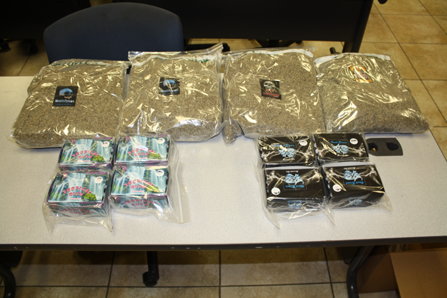Update on America’s Current Illicit Drug Market: Many New Drugs, Higher Quantities

The Drug Enforcement Administration regularly keeps Americans and law enforcement personnel updated on new drugs arriving on the illicit market and shifting patterns in trafficking and use. In June 2023, the DEA’s report revealed the latest developments in this ever-changing landscape of illicit drugs.
Based on reports from the DEA and other agencies, here is some of the information you may need to know about our current illicit drug situation.
First Changing Trend: Newly-Emerging Drugs
Seen for the first time in these regions in 2023 were these drugs:
Western United States:
- N-Ethyl norfentanyl: Yet another type of fentanyl
- ADB-5Br-4en-PINACA: Synthetic cannabinoid
Midwest:
- N-Pyrrolidino metonitazene: A nitazene, a class of drug with effects similar to opioids
- Methylmethaqualone: Synthetic sedative
- Paynantheine: Structurally similar to opioids, comes from an alkaloid found in the Kratom plant (Mitragyna speciosa)
- ADB-INACA: Synthetic cannabinoid

South:
- 4F-alpha-PiHP (full name 4-Fluoro-alpha-pyrrolidinohexanophenone): Stimulant mimicking the effects of cocaine
- N-Pyrrolidino protonitazene: Another nitazene
South and East:
- N-Piperidinyl etonitazene: Another nitazene
- ADB-FUBIATA: Synthetic cannabinoid
- BZO-4en-POXIZID: Synthetic cannabinoid
It’s true that some of these substances are not (as of this writing) considered illegal drugs. For example:
- ADB-INACA was not designated as an illegal drug as of December 14, 2022.
- Any Kratom products are illegal in only six states.
- The public has been warned about nitazenes but they are not yet listed as illegal drugs.
It is important to keep up with these changes. Combating drug use, especially among youth, must include an awareness of these changes. Otherwise, our messages to youth may miss the mark. They may be told that new drugs on the market are “legal” or “safe”—while they may only be legal for a short while (till the laws catch up to them) and are never safe.
Second Changing Trend: Increasing Quantities
Fentanyl is the most deadly drug in the country at this time. But this is not a single drug, but a family of many chemically similar drugs such as acrylfentanyl, sufentanil and carfentanil. They are all powerful opioids capable of causing fatal overdoses. Some of them are astonishingly potent, vastly more potent than heroin.
Just in the last few years, this family of drugs has killed more than a quarter-million Americans. Despite every law enforcement agency staffer knowing the dangers of this drug, the quantities of fentanyl seized on the illicit market continue to increase.
These are the numbers of seizures of fentanyl reported to the National Forensic Laboratory Information Service since 2014:
- 2014: 5,541
- 2015: 15,488
- 2016: 37,426
- 2017: 62,081
- 2018: 89,766
- 2019: 100,378
- 2020: 117,045
- 2021: 153,949
In other words, in 2022, the national laboratories specializing in the identification of illicit drugs received samples of seized fentanyl 153,949 times.
At the end of 2022, the DEA announced that more than 50.6 million fake prescription pills containing fentanyl had been seized during the year, along with 10,000 pounds of fentanyl powder. This amounted to more than 379 million potentially fatal doses of the drug. This was more than twice as many fentanyl-laced pills than were seized in 2021.
This increase constitutes a massive increase in quantity, a tripling of supply in just a few years.
America is in the crosshairs of drug dealers, traffickers and manufacturers. There are millions of people in this country who are addicted to one type of drug or another and they are vulnerable to the tactics and strategies of their local drug dealers.
In this country, more than 139 million people have consumed an illicit drug in their lifetime. Every month, nearly 40 million people do the same thing. These are harmful and sometimes deadly substances but these people went ahead and tried them. Some people became addicted. Some people died. Some people never did it again.
What Has to Change to Improve This Situation?
For many years, law enforcement personnel felt that seizing drugs and arresting users, drug dealers and traffickers was the way to win. Time has proven this approach to have very limited value. One by one, law enforcement personnel are realizing that “We can’t arrest our way out of this problem.”

Yes, drug dealers, traffickers and manufacturers must pay for the harm they do to others. But arrests and incarcerations won’t resolve the problem. Once a drug dealer, trafficker or manufacturer is properly put in jail, there are always others willing to take their place.
According to the 2021 National Survey on Drug Use and Health, there are 61 million people using illicit drugs every year. More than 3.6 million of them are under 18 years of age. It is likely that the majority of these people did not fully understand the danger of drug use when they used their first drug.
Two Fronts of Attack to Resolve This Situation
The main two fronts on which this battle can be approached are treatment and prevention.
Treatment: In 2020, 1.4 million people received help at a publicly-funded substance abuse treatment program[6]. The Substance Abuse and Mental Health Services Administration reports that more than 46 million people are suffering harm as a result of their drug use[5]. It’s obvious that far more treatment capacity is needed to reach all these people. On top of that, many people need more than one stay in rehab to achieve sobriety, so the capacity needed is even higher.

Prevention: There are many hundreds of different school and community drug prevention programs. When a school or group chooses a program to deliver to their students or members, it is essential to ensure that the program has a track record of actually reducing drug abuse. Not every program does so.
- If every child, every academic year, receives instruction on the dangers of drug abuse (and how easily it can become deadly) as taught by an effective drug prevention program, then perhaps we will have done our best possible job of prevention.
- If every community has drug-free events, drug-free venues and drug-free role models, this would help spread the message even further.
- If many celebrities such as sports figures and entertainers would stand up in favor of being 100% drug-free, then perhaps children would hear a message that would help keep them safe.
The lesson is that drug abuse, no matter how insignificant it seems at the beginning (“I’m only smoking a little weed”) can escalate into the use of more dangerous drugs and then into addiction and finally, fatal overdose must be taught. This exact path has been walked too many times by too many people to be ignored. No one begins drug abuse planning to someday fatally overdose. No one. Ever.
The Vital Necessity to Stay Informed
Barry Logan, a toxicologist and researcher who tracks changes in drug supply and use made this statement:
“If you think you know what is going on based on data from three months ago, you probably don’t know much at all. It’s very dynamic and it’s not ending. Certain things are changing, but overall, the concept of newly emerging drugs infiltrating the drug supply is continuous.”
Therefore, one aspect of overcoming this national problem is staying informed about the problem and letting the public know what the dangers are. At Narconon, we help the public stay informed of changes and dangers in the world of drug abuse and addiction as a way of helping our readers keep themselves and their families safe.
Sources:
- “Drug Snapshot.” National Forensic Laboratory Information System, 2023. NFLIS
- “CBP Officers and Scientists Identify Two New Synthetic Cannabinoid Analogues.” Customs and Border Protection, 2022. CBP
- “Provisional Drug Overdose Death Counts.” Centers for Disease Control and Prevention, 2023. CDC
- “Drug Enforcement Administration Announces Seizure of Over 379 Million Deadly Doses of Fentanyl in 2022.” Drug Enforcement Administration, 2022. DEA
- “2021 National Survey on Drug Use and Health.” Substance Abuse and Mental Health Services Administration, 2021. SAMHSA
- “2020 Treatment Episode Data Sets.” Substance Abuse and Mental Health Services Administration, 2020. SAMHSA. TEDS
- “Fighting the Uphill War Against Illicit Drugs and Overdose Deaths: Detecting Emerging Designer Drugs and Opioid Analogs.” National Institute of Justice, 2023. NIJ


 ®
®